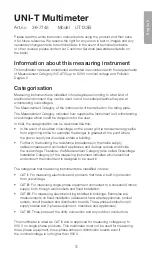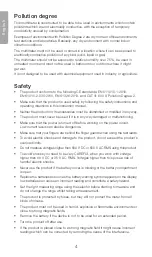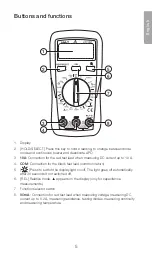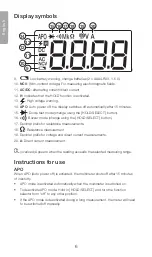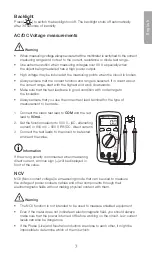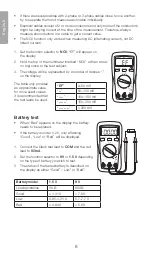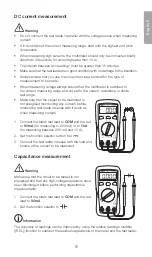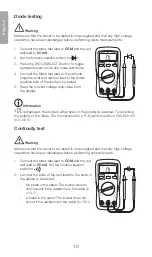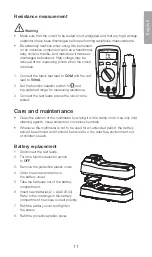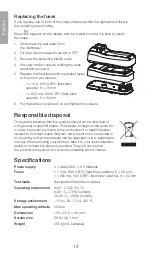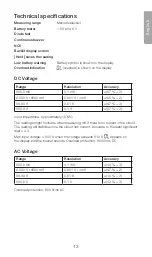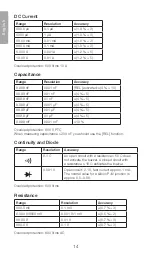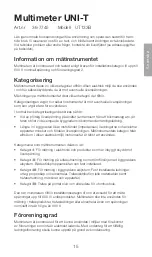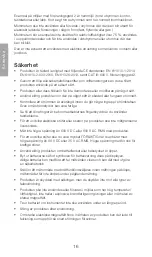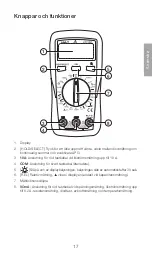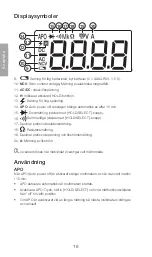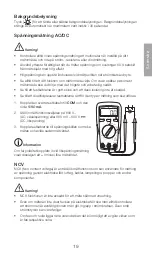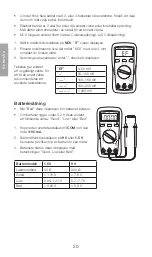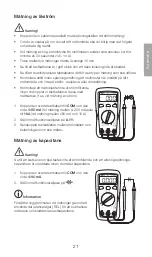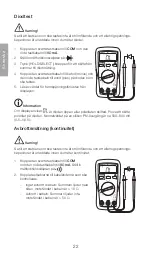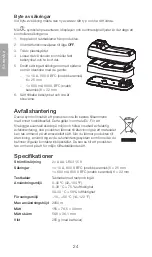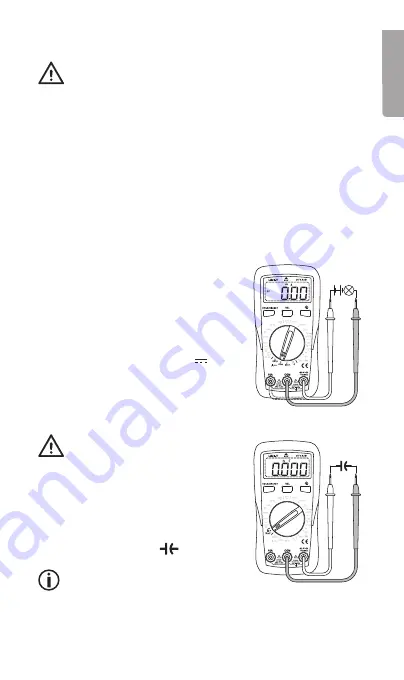
9
English
DC current measurement
Warning
• Do not connect the test leads in parallel with the voltage source when measuring
current!
• If in doubt about the correct measuring range, start with the highest and work
downwards.
• When measuring high currents, the multimeter should only be connected briefly
(less than 30 seconds for currents greater than 10 A).
• The interval between two readings must be greater than 15 minutes.
• Make sure that the test leads are in good condition with no damage to the insulation.
• Always ensure that you use the correct test lead terminal for the type of
measurement to be made.
• When measuring voltage always ensure that the multimeter is switched to
the correct measuring range and not set to the current, resistance or diode
test range.
• Make sure that the object to be measured is
not energised (conducting any current) before
connecting test leads in series with it (such as
when measuring current).
1. Connect the black test lead to
COM
and the red
to
VΩmA
(for measuring 0–200 mA) or to
10A
(for measuring between 200 mA and 10 A).
2. Set the function selector switch to A
.
3. Connect the test leads in series with the load and
source of the current to be measured.
Capacitance measurement
Warning
Make sure that the circuit to be tested is not
energised and that any high-voltage capacitors have
been discharged before performing capacitance
measurements.
1. Connect the black test lead to
COM
and the red
lead to
VΩmA
.
2. Set the function selector to
.
Information
The accuracy of readings can be improved by using the relative readings modifier
([ REL ]) function to subtract the residual capacitance of the meter and the test leads.



